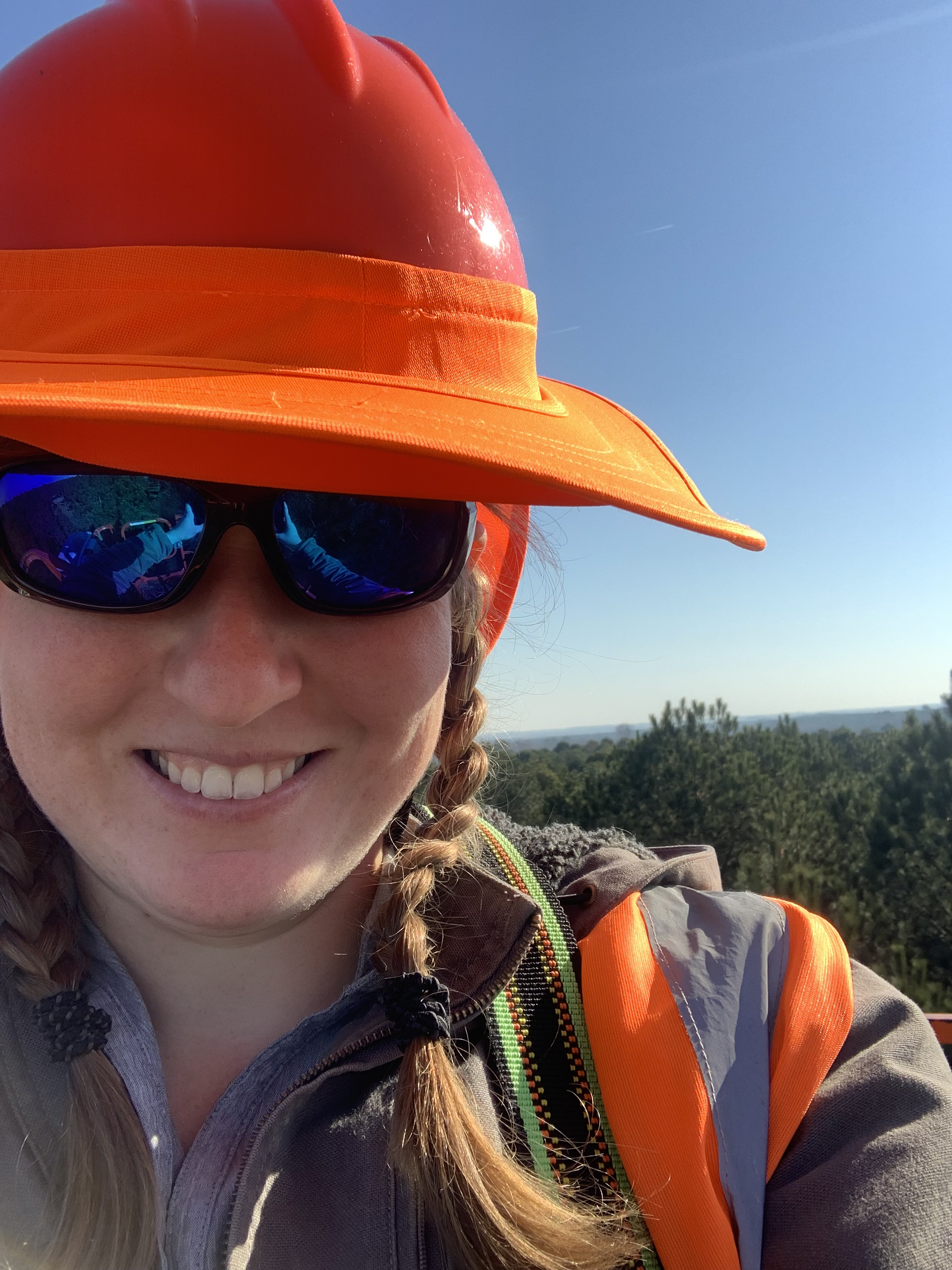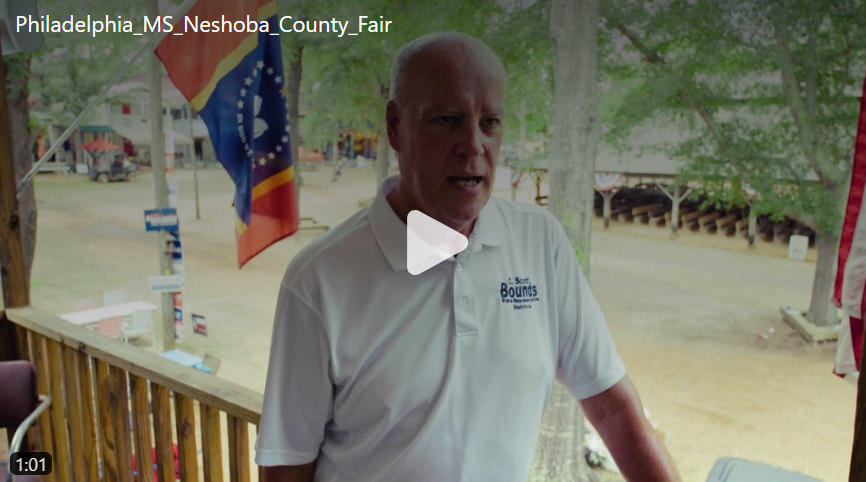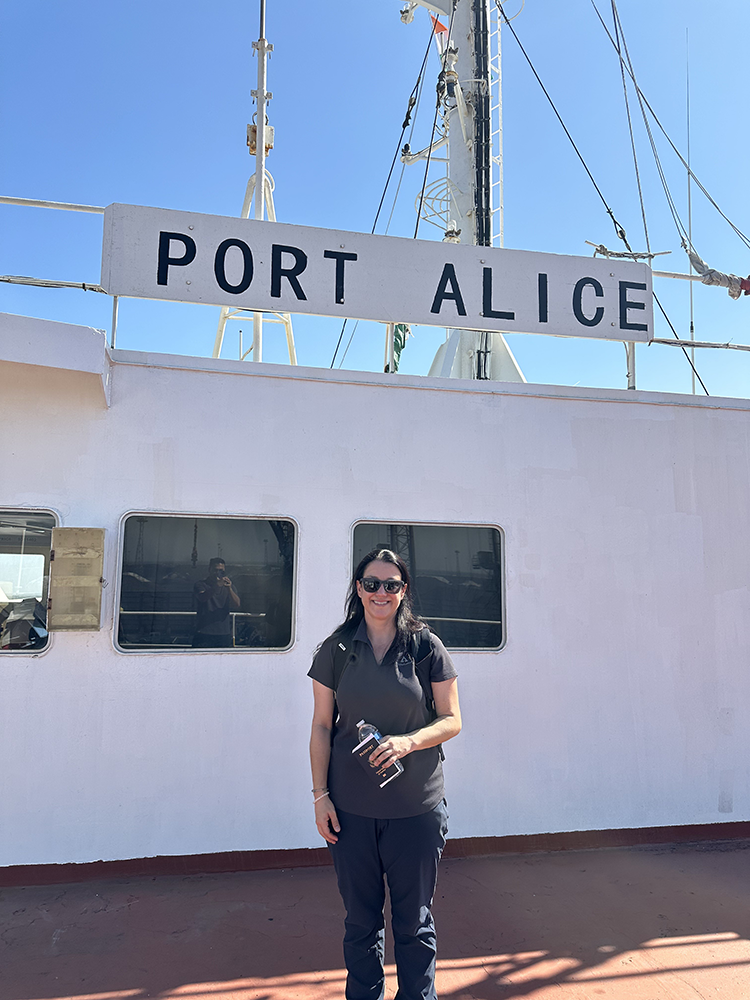
Jaine in a lift unit about 50 feet in the air in a loblolly pine orchard. Jaine says she enjoys working in research but is surprised how disconnected many people are from food and other agricultural products like trees.
Peach trees and loblolly pines might not appear too similar at first glance. But according to Jaine Allran, a germplasm development coordinator in Sylvania, Georgia, they have more in common than you think — especially when it comes to selective breeding.
“For the most part, trees are trees,” says Jaine, who grew up in South Carolina. “The basics are the same.”
In her role supporting the Timberlands Strategy & Technology’s Southern Tree Improvement team, Jaine coordinates and executes breeding plans for loblolly and slash pine in our Southern Timberlands. It’s a job she prepared for by earning a bachelor’s in biology and a master’s in plant environmental science from Clemson University, where her graduate research focused on peach trees. She says many of the same principles and techniques she learned in school — and even a few she picked up during a brief stint as a grower at a medical cannabis facility after graduation — apply in her current work.
“I was able to translate my skills, both from working with peaches and even a little bit of stuff from my work on cannabis, over to pine trees,” Jaine says.
Jaine and her boyfriend Jonathan at Amicalola Falls, Georgia.
Jaine works with germplasm, the genetic material — seeds, plants or plant parts — used to breed trees. Jaine is the only person doing full-time breeding work for our operations in the South, though she works closely with foresters and the rest of the Tree Improvement team, and she also gets help from contractors. But mostly, she’s on the trees’ schedule.
“The trees don’t care if it’s a Saturday or a holiday,” says Jaine, who started at our nursery in Aiken, South Carolina, in 2019 before moving to her current position four years ago. “Sometimes I need to work straight through, especially during breeding season. It’s not like tomatoes; we only get one shot to do what we need to do for breeding, or else we’re behind an entire year.”
This work also requires extreme patience. In fact, anything she works on this year won’t be planted by Southern Timberlands for at least 10 to 15 years.
“It doesn’t always feel like I have a cool job, but when I explain it to people, they always tell me that it is!”
Pollen exclusion bags on loblolly catkins. The bags are used to control pollination breeding in the orchard.
MEET JAINE
Your title is germplasm development coordinator. Tell us what you do.
My job is to coordinate and execute the breeding plans we have for loblolly pine and some slash pine in Southern Timberlands. We breed our trees for specific traits, including things like volume, straightness, disease resistance and wood quality.
We have multiple ways to store germplasm. We store pollen to use for breeding — hand-pollinating flowers from one parent tree with the pollen of another. That produces seeds we can plant. When it comes to breeding, we take a piece of a tree that's already grown and graft it to what's called root stock, a pre-grown tree. This combines the vascular system of those two trees and gives the tree a different genetic make-up above the graft point.
I also manage our germplasm archives. Whenever we find a tree with genetics we really like, we store that tree in our archive. To do that, I graft a live branch from the tree to root stock and plant it. I make sure all the trees in our archive are healthy and happy.
Tell us what your day is like.
My job is very seasonal. In the spring, I focus on breeding the cones. I spend most of my time in a lift basket, up in the tops of trees, putting on pollen exclusion bags, finding flowers, adding the pollen we want, then monitoring them. It’s more relaxed in summer; I spend my time managing our archives and germplasm stores. I’m also busy mowing, spraying, labeling and doing things like inventory and database management. I harvest the cones during fall. It’s an 18-month cycle, so the cones I bred this past spring will be harvested in fall 2026. I must be very particular with this, taking time to make sure I’ve got the correct cones. I also do research projects in the lab, testing seeds or pollen — there’s a lot of research that goes into determining how we grow our trees. During winter, I prepare for the spring breeding season. I collect the material used for grafting when it’s dormant, then I start the grafting process in late winter or early spring, before bud break in March. I wear a lot of hats; sometimes I even run heavy equipment. If you can think of it, I've probably done it.
Successfully bred pine flowers inside a pollen exclusion bag.
What’s your favorite part of your job?
I really enjoy research, attending conferences and networking. We get to see new technologies, share ideas and learn about what's coming down the pipeline. During college, I attended a meeting of the American Pomological Society, which is for fruit. I got to taste new peaches, and I sampled cotton candy grapes before they were even on the market. I really enjoyed that. People outside of agriculture often don’t realize how much work goes into growing crops, from the scientific side and the labor side.
You must have some challenges. What are they?
The weather. The type of winter we have can really affect our breeding season. We got hit hard by Hurricane Helene last year and lost some of our breeding stock at our seed orchard in Lyons, Georgia, where I do a lot of my work. Plus, from a safety perspective, it's not fun when I’m 45 feet up in the air in an aerial lift and get hit by a big wind gust. I really need to pay attention to the weather.
Loblolly pine flowers ready to receive pollen via wind pollination.
Tell us something about your job that might surprise people.
How much pollen I keep stored for the breeding process. I need to collect it before everything turns yellow, and I keep a lot because it doesn’t last forever. One time, we had a 13-gallon trash can full of pollen. Luckily, I don’t have any allergies!
What advice would you give people who want a job like yours?
Graduate school is important, but try to get varied experience. Go out in the field, spend time in the lab, try a little bit of everything. The fact that I had both field and DNA experience was helpful. So don’t limit yourself. I never expected to be working with pine trees, but I was able to leverage my other professional experiences.
When you were young, what did you want to do?
I wanted to be a marine biologist. I mean, dolphins — who doesn't want to study dolphins? But I quickly learned how easy it is for the ocean to kill you. So, after a while, I decided to work with plants.


